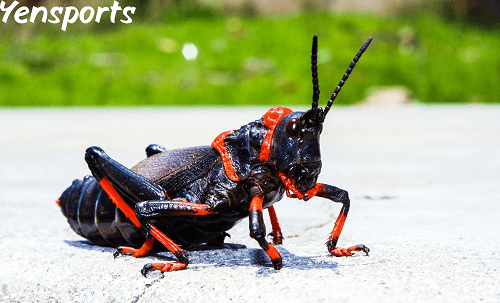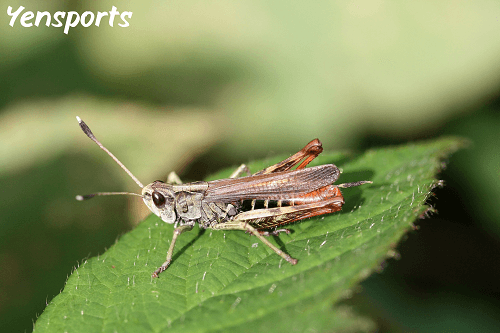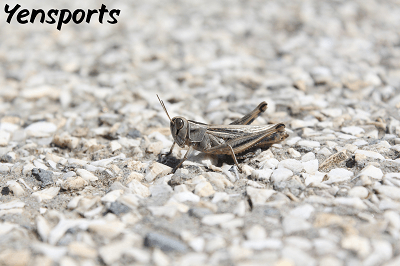Are Crickets Harmful?
Crickets are nocturnal insects that are usually about the size of a thumbnail. The sounds of warm summer nights are often attributed to their chirping. Because crickets do not seem as threatening and are so minuscule, many people overlook the idea that they might become a problem for humans, pets, and the environment. We are going to discuss the possible risks from, their actions, and how to manage them should it be necessary.

Are Dangerous for Humans?
Usually, there’s nothing to fear from a cricket: they are harmless to people, and never attack. They neither bite nor sting nor communicate diseases. Crickets do feed using tiny, sharp mandibles; however, those are too weak to even break the human skin. They can make a jumping movement and fly towards a human, but they are harmless in general and tend to stay away from humans.
However, can be obnoxious in certain situations. For example, their incessant chirping at night can be unbearable and disturb sleep. In highly populated areas, the constant noise from them can become unbearable for people who are sensitive to sound and can cause distress or sleep deprivation.
In very rare cases, people with asthma or severe allergies may react to cricket debris, such as shed skin or droppings. This could lead to respiratory issues, but such cases are exceptional and not common.
Are Dangerous to Pets?
For most pets, crickets are not a threat. Many pets, such as cats, dogs, and reptiles, enjoy chasing and eating crickets. They are often seen as a natural food source and can even be beneficial for pets, especially reptiles that require live insects as part of their diet.
However, there are a few things to consider. While they aren’t harmful, if pets eat large quantities of them in a short period, it might lead to digestive upset or an imbalance in their diet. Therefore, it’s important to ensure that any your pet consumes are free of harmful substances.
Can Crickets Damage Property?
Cockroaches are primarily herbivores, feeding on plant matter, decaying organic matter, and sometimes fabric. While they do not pose a major threat to most types of property, they can cause minor damage in certain situations. For example, some species of cockroaches have been known to chew on clothing, especially wool items, as well as furniture, cardboard, and even books.

Crickets are considered a nuisance in large quantities because they can infest homes or businesses, especially in the cold months when they look for shelter inside. They mostly enter homes through cracks in walls or open windows. They may damage stored goods or make an unsightly mess of dead and droppings inside.
In addition, crickets attract other pests, such as spiders, which are unwanted guests.
Do Crickets Pose a Risk to Crops?
Cockroaches are omnivores and feed on a wide range of plants, including crops. They generally do not cause the amount of crop damage seen when other pests such as locusts or grasshoppers are present, but they can potentially cause damage when they become prevalent in agricultural areas. Their search for food will result in the devouring of young seedlings and the destruction of leaves, as well as the complete loss of plants in extreme conditions.
The damage is likely to be more significant in smaller, controlled environments such as greenhouses or gardens where crickets can become concentrated. However, large-scale commercial farming is not typically a major concern because other pests and agricultural practices tend to take precedence.
How to Control Cricket Populations?
There are various methods of dealing with ‘ overpopulation if they find their way into your home. To start, keep them away. Sealing cracks found on the walls, windows, and doors keep them out of the house. Installing a window screen or applying a thin line of weatherstripping along doors also helps to repel them.
If you already found it inside your house, natural ways like diatomaceous earth may be used. This can kill insects but is non-toxic to humans and pets. Sticky traps and cricket baits may also help in reducing their number.
In outdoor areas, a clean and well-groomed garden can deter cricket infestations. Avoid making leaf piles, grass cuttings, or mulched pile areas where tend to hide. Organically control through pest control products or neem oil if they are destroying crops.
FAQs About Crickets:
1. Do crickets bite humans?
No, they cannot bite humans. They graze on plant material and never feed on human meat.
2. How do I get rid of in my house?
To eliminate, seal entry points, use sticky traps, and consider using natural repellents like diatomaceous earth or essential oils such as peppermint.
3. Do crickets carry diseases?
No, crickets do not transmit diseases to humans or animals. They are not known to carry any harmful pathogens.
4. Are crickets harmful to my garden?
While may eat some of the plants, they are not typically a threat. They might eat young plants or seedlings in small, enclosed areas such as greenhouses.
5. Why do crickets chirp at night?
Crickets primarily chirp to attract mates. The male produces the chirping sound by rubbing their wings together in a process called stridulation.
Conclusion:

In short, cockroaches are harmless to humans, pets, and property under normal circumstances. They can occasionally cause minor nuisances, especially due to noise or eating habits, but they are harmless. If they do become a problem, simple prevention and control methods can be used to control their presence. Understanding the nature of these insects can help ease concerns and ensure that you can live with them without problems.

